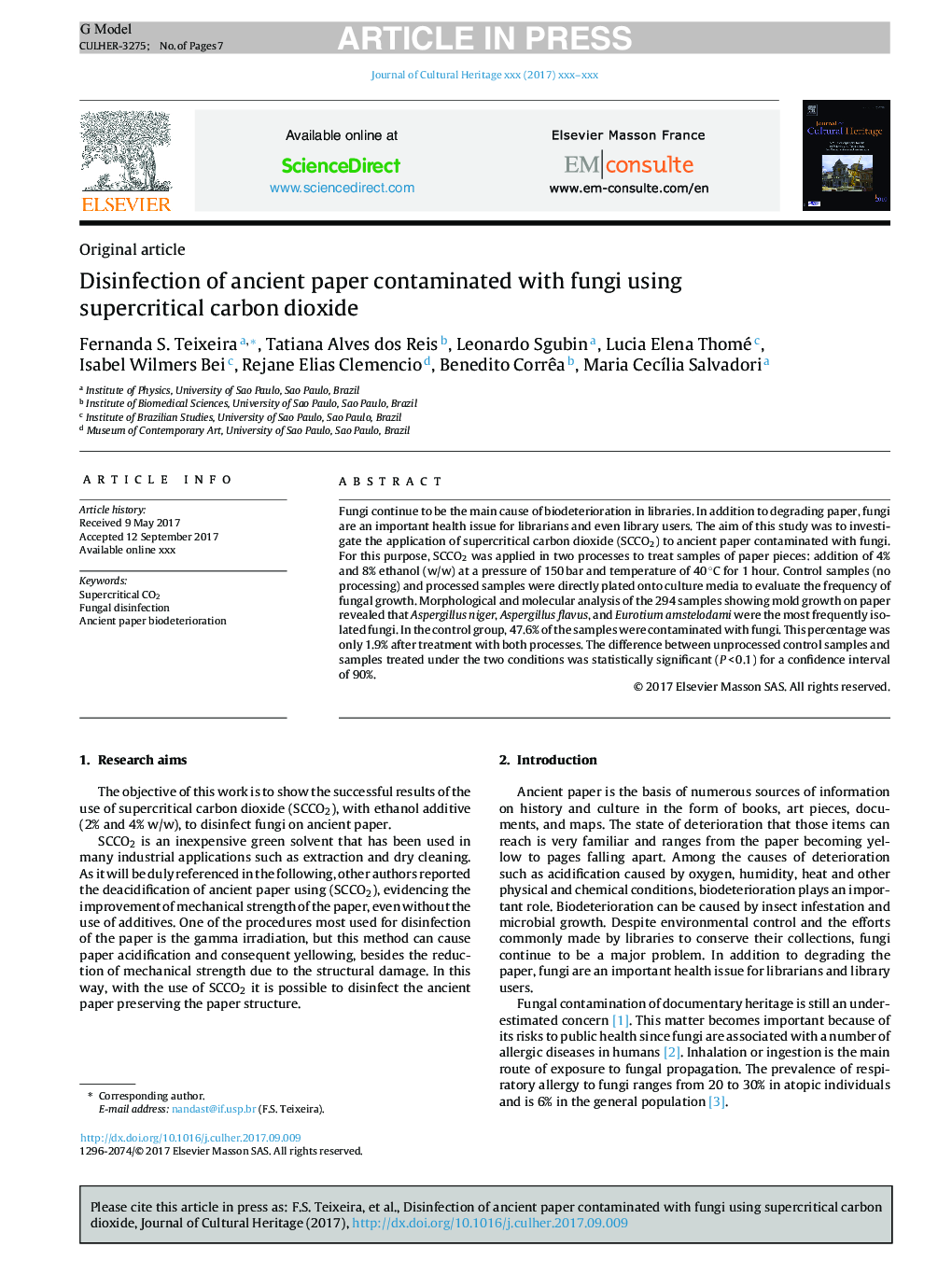| Article ID | Journal | Published Year | Pages | File Type |
|---|---|---|---|---|
| 7446103 | Journal of Cultural Heritage | 2018 | 7 Pages |
Abstract
Fungi continue to be the main cause of biodeterioration in libraries. In addition to degrading paper, fungi are an important health issue for librarians and even library users. The aim of this study was to investigate the application of supercritical carbon dioxide (SCCO2) to ancient paper contaminated with fungi. For this purpose, SCCO2 was applied in two processes to treat samples of paper pieces: addition of 4% and 8% ethanol (w/w) at a pressure of 150 bar and temperature of 40 °C for 1 hour. Control samples (no processing) and processed samples were directly plated onto culture media to evaluate the frequency of fungal growth. Morphological and molecular analysis of the 294 samples showing mold growth on paper revealed that Aspergillus niger, Aspergillus flavus, and Eurotium amstelodami were the most frequently isolated fungi. In the control group, 47.6% of the samples were contaminated with fungi. This percentage was only 1.9% after treatment with both processes. The difference between unprocessed control samples and samples treated under the two conditions was statistically significant (P < 0.1) for a confidence interval of 90%.
Keywords
Related Topics
Physical Sciences and Engineering
Chemistry
Physical and Theoretical Chemistry
Authors
Fernanda S. Teixeira, Tatiana Alves dos Reis, Leonardo Sgubin, Lucia Elena Thomé, Isabel Wilmers Bei, Rejane Elias Clemencio, Benedito Corrêa, Maria CecÃlia Salvadori,
